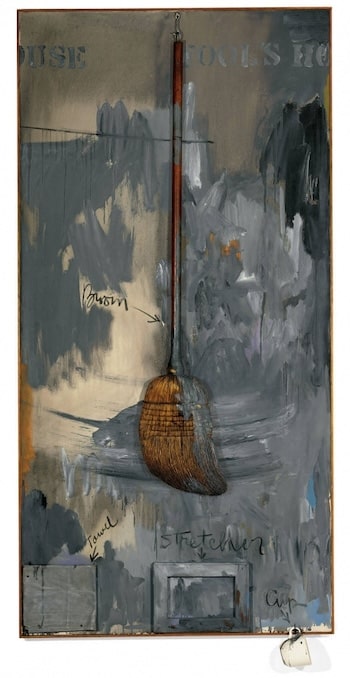Fool’s House, 1964 by Jasper Johns

Fool's House features a real broom - which is partially painted - hanging from a hook. The arc of the household broom's brushstroke, which is visible on either side of its bristles, plainly indicates that it has "painted" a significant portion of its canvas. Though marked "broom" in the artist's handwriting near the base of the shaft, it is undoubtedly Johns' "paintbrush".
In Fool's House, the balance between the conceptual and painterly elements is perfectly struck – there is a kind of rich counterpoint between them, a perfect tension between the real and the depicted, the word and the gesture, the planned and the spontaneous, the intention and the act. The action of the broom sweeping the paint in the arc is balanced against the frozen nature of paint, the hanging of the broom, cup on hooks that suggest they could swing, and the writing on the canvas...
The world of the imagination (the paint markings) and the actual (the things) are beautifully at odds with one another. Paint markings with expressive gestures let the imagination roam and conjure up pictures in the shadows. A lot of action is captured in the region to the right of the broom; perhaps something was painted in and then removed again. This gave Johns the idea to fill up the remaining gray regions with paint in order to create a composition that he thought looked good. Enclosing the entire piece within a frame highlights both the marking process and the cup's dual existence within and outside the painting.
Fool's House is a collection of thoughts and an impromptu artistic moment from the life of the artist. Is Johns calling himself a fool since the objects- a broom, a stretcher, a towel, and a cup - could all be found in any ordinary painter's studio? In contrast to some of his other work, it is still interpretive in that it includes a self-portrait and Rosicrucian-style references to Rembrandt and Vermeer.
